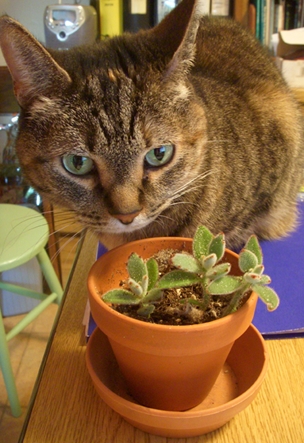How to water and when to take the plunge

enlarge this imageWhich pot might take the plunge? One so dry its root ball repels water, or one that contains a plant so tiny a hard pour of water could dislodge it, or one whose resident has furry leaves that don't like to be wet. This tiny Kalanchoe tomentosa 'Chocolate Soldier' fits the tiny, furry categories.
Normal watering...
We like to water potted plants from a pitcher, slowly so we know
the water is being absorbed. We keep pouring until water oozes out
the drain holes.
Then we give it time, to see if that excess is absorbed. If any
water remains in the catch basin after 20 minutes, we pour it off.
If all the excess has been re-absorbed we add a little more until
we see it oozing once again, then stop and empty the catch
basin.
In this way we learn how much water it takes to thoroughly wet
the root ball. We don't water again until it feels both dry and
warm when we push a finger in a knuckle deep, or until we heft the
pot and know it's light in comparison to the fully soaked pot. Then
we expect the plant to take that amount our pitcher test said it
can hold.
Taking the plunge
We plunge a pot to:
- Re-wet a shrunken root ball,
- Gently water plants so tiny they may be dislodged by an
overhead stream,
- Keep water and splashed debris off of furry, sensitive
leaves.
The kalanchoe pictured here is a candidate. It bears the
marks of a flood of water that deposited sand on its
leaves.
We fill the sink or a bucket with enough water to just barely,
gently come over the plant's soil surface when we set the pot into
the basin. We hold the pot down until it stops trying to float and
bubbles stop rising. Then it's time to lift it up, let it drain,
and note its weight as we set it back on its catch basin.
